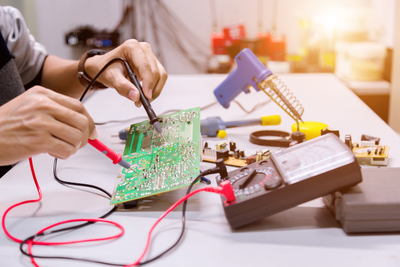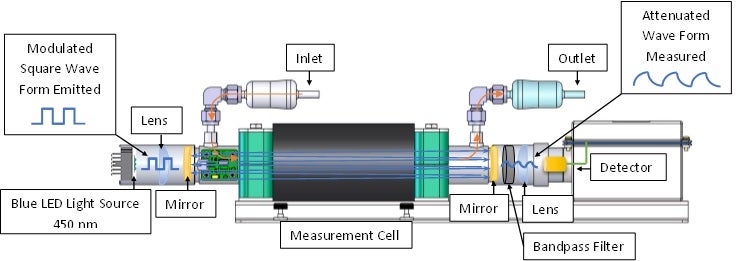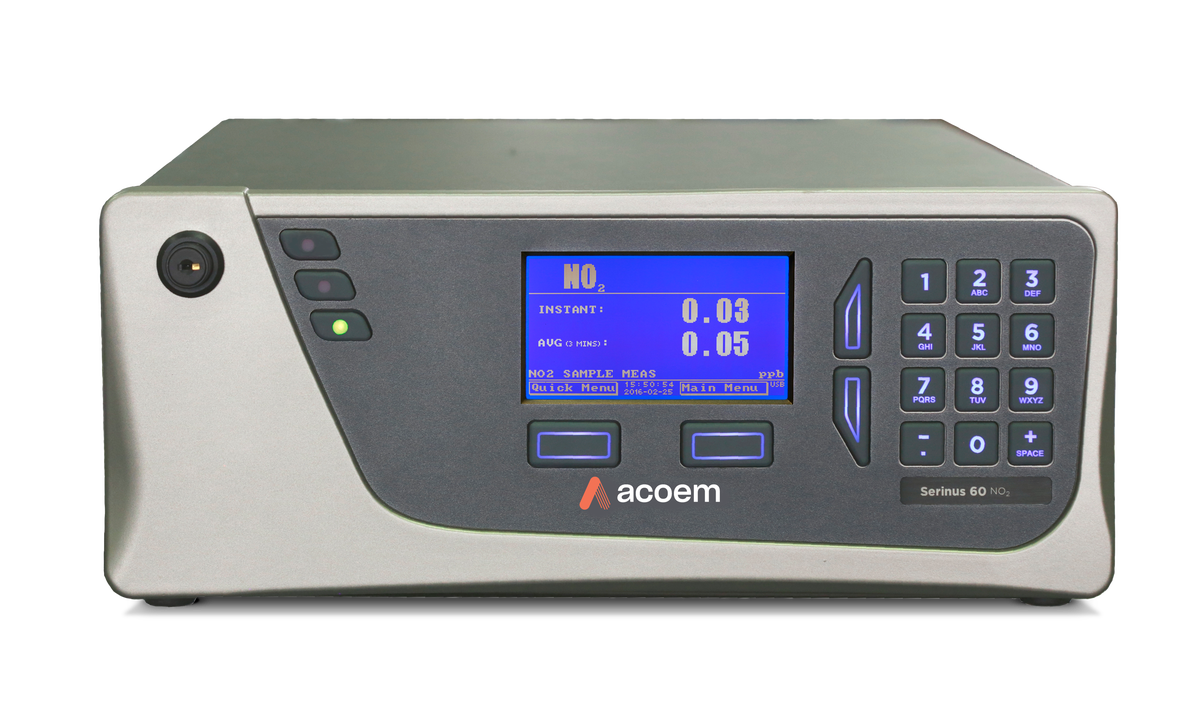In the battle for cleaner air and healthier communities, one pollutant has taken center stage: nitrogen dioxide (NO₂). Known for its harmful impact on respiratory health, as well as its contribution to smog and acid rain, NO₂ is a byproduct of vehicle emissions, industrial activities, and fossil fuel combustion. Given the increasing awareness of air pollution's health risks, the demand for accurate and reliable NO₂ monitoring is more urgent than ever. This is where cutting-edge technology like the Serinus 60 NO₂ analyzer, equipped with Cavity Attenuated Phase Shift (CAPS) spectroscopy, comes into play, setting a new standard for precision in environmental monitoring.

Understanding the Need for Direct NO₂ Measurement
Traditionally, air quality monitors have used indirect methods to measure nitrogen dioxide, typically by measuring other nitrogen oxides (NOx) and inferring NO₂ levels. While these methods provide useful insights, they often lack the precision needed for applications requiring direct and accurate NO₂ measurements, such as compliance with environmental regulations, scientific research, and urban air quality assessments.
Direct NO₂ measurement offers several key advantages. First, it reduces the possibility of measurement errors associated with complex chemical interactions or assumptions used in indirect monitoring methods. Second, direct measurement ensures that environmental professionals and policymakers have access to reliable, real-time data on NO₂ concentrations, empowering them to take swift action in areas where pollution levels pose a health risk.
The challenges of measuring NO₂: Why accuracy matters
Before exploring how the Serinus 60 addresses the issue, it’s important to understand the challenges in measuring NO₂ with traditional methods:

Indirect measurement techniques
Most traditional air quality monitors infer NO₂ levels by measuring NOx (nitrogen oxides) and then making an estimation. While useful, this approach lacks the precision needed for applications requiring accurate, real-time NO₂ data, leading to potential errors in decision-making.
Complex calibration and maintenance
Older NO₂ analyzers require frequent calibration due to sensitivity to variables like humidity, temperature, and other gases. This results in inconsistent data and higher operational costs for organizations relying on long-term monitoring.


Limited sensitivity to low concentrations
Many traditional monitors struggle to detect low concentrations of NO₂, which are essential for tracking background pollution in urban areas and rural regions alike. Missing small fluctuations can have a significant impact on public health assessments and pollution control strategies.
Slow response times
Traditional NO₂ detection methods can involve delays in data processing, which prevent timely intervention when air quality deteriorates. This delay is particularly problematic for agencies aiming to respond to pollution spikes in real-time.


Cross-Sensitivity to other pollutants
Traditional NO₂ monitors are often affected by interference from other gases or pollutants, such as ozone or particulate matter. This cross-sensitivity can lead to skewed results that make it difficult to rely on the data for regulatory or health-related decisions.
A revolution in NO₂ detection with CAPS technology
The Serinus 60 NO₂ analyzer uses Cavity Attenuated Phase Shift (CAPS) spectroscopy, an innovative technology that offers direct, real-time NO₂ measurement with unparalleled accuracy and reliability. This technology eliminates many issues associated with traditional methods, providing a powerful tool for air quality monitoring.

How Does CAPS technology work?
At its core, CAPS technology measures light absorption to detect NO₂ molecules in the air. In a CAPS system, light is introduced into a cavity with highly reflective mirrors. As the light bounces inside the cavity, it interacts with NO₂ molecules, causing a phase shift. The system then measures this phase shift to determine the concentration of NO₂ in the sample.
Unlike older methods, such as chemiluminescence, CAPS spectroscopy is non-invasive, doesn’t rely on chemical reagents, and requires far less calibration. These advantages make the Serinus 60 a cost-effective, low-maintenance solution for continuous, long-term NO₂ monitoring.

The benefits of CAPS technology for NO₂ monitoring
Precision and Accuracy
The primary advantage of CAPS technology is its unparalleled precision. By directly measuring the NO₂ present in the air, the Serinus 60 NO₂ analyzer can detect even minute fluctuations in concentration, making it ideal for applications where accuracy is paramount. This precision is crucial for air quality monitoring in urban centers, where NO₂ levels can vary significantly between different locations and times of day.
For industries that must comply with stringent environmental regulations on air pollution, accurate data from the Serinus 60 ensures that they can meet their legal obligations without risk of costly fines or penalties. Whether it’s a power plant, refinery, or a manufacturing facility, knowing the exact levels of NO₂ emissions is essential for reducing environmental impact.
Real-Time data for immediate action
With traditional methods, NO₂ measurements often involve long delays due to the need for complex calculations or the use of consumable chemical agents. CAPS technology changes this by providing real-time data on NO₂ levels, allowing users to monitor changes as they happen. This real-time capability is especially important for municipal governments and environmental agencies working to improve air quality in urban areas.
For instance, cities can use real-time NO₂ data to trigger emergency response measures when air pollution reaches dangerous levels. By continuously monitoring NO₂ concentrations, environmental agencies can inform the public of air quality concerns and implement traffic restrictions or other pollution control measures to reduce emissions.
Low maintenance and long-term reliability
One of the biggest challenges in environmental monitoring is ensuring that equipment remains reliable and functional over the long term. Traditional NO₂ monitors require frequent calibration and can be affected by factors like humidity, temperature, or the presence of other pollutants, leading to drift in measurements.
In contrast, the Serinus 60’s CAPS-based technology is remarkably low-maintenance. Since it doesn’t rely on chemical reactions, the system has fewer consumables to replace, and its performance remains stable over time. This ensures reliable, long-term monitoring without frequent downtime or maintenance. For organizations looking to deploy monitoring networks in remote or challenging environments, this reliability makes a significant difference in both operational costs and data quality.
Cost-effectiveness
For many organizations, particularly those operating in the public sector, cost is a major concern when investing in air quality monitoring technology. The Serinus 60 addresses this issue by offering a cost-effective solution that doesn’t compromise on performance. CAPS technology reduces the need for expensive consumables, labor-intensive calibration procedures, and frequent maintenance, making it an attractive option for those seeking to optimize their operational budgets while maintaining high standards for air quality monitoring.
Sensitivity at lower concentrations for ecological protection
One of the most significant advantages of CAPS technology in the Serinus 60 NO₂ analyzer is its ability to detect extremely low concentrations of nitrogen dioxide, even at parts per trillion (ppt) levels. This sensitivity is particularly beneficial for monitoring air quality in ecologically sensitive zones, where even trace amounts of pollutants can have a profound impact on wildlife, vegetation, and natural ecosystems.
In areas like national parks, wetlands, and regions near endangered species habitats, maintaining clean air is critical for preserving biodiversity and environmental health. Traditional monitoring systems may struggle to capture these low NO₂ levels, but the Serinus 60 provides the precision necessary to ensure that pollution remains within safe thresholds. With this capability, environmental agencies and researchers can better protect delicate ecosystems from the harmful effects of air pollution.
Real-world applications for Serinus 60 NO₂ analyzer
The Serinus 60 NO₂ analyzer is versatile and can be used in a wide range of applications, from urban air quality monitoring to industrial emissions control. Below are some key areas where this technology can make a significant impact:

Urban Air Quality Networks
Cities worldwide are facing rising NO₂ levels due to increased vehicle traffic and industrial activities. The Serinus 60 is an excellent tool for monitoring NO₂ concentrations in urban environments, helping governments and municipalities to identify pollution hotspots and implement effective mitigation strategies.
Industrial Compliance and Emissions Monitoring
For industries such as power generation, manufacturing, and chemical processing, the Serinus 60 offers a reliable way to monitor NO₂ emissions and ensure compliance with environmental regulations. Real-time data allows companies to adjust their operations as needed to stay within legal limits and avoid fines or operational shutdowns.


Research and Environmental Studies
Environmental scientists and researchers studying the effects of NO₂ on air quality and human health can benefit from the high accuracy and sensitivity of Serinus 60. Whether it’s measuring background NO₂ levels in rural areas or studying the impact of traffic emissions on urban air quality, the Serinus 60 provides the precise data needed for informed analysis.
Embrace the future of NO₂ measurement: Serinus 60 with CAPS innovation
As global efforts to reduce air pollution and improve public health continue, the importance of accurate, reliable NO₂ monitoring cannot be overstated. The Serinus 60 NO₂ analyzer, with its innovative CAPS technology, represents the future of air quality monitoring, offering precision, real-time data, and long-term reliability.
By embracing cutting-edge tools like the Serinus 60, governments, industries, and environmental organizations can take proactive steps toward reducing NO₂ emissions, protecting public health, and building a cleaner, more sustainable future for all.
Connect with Met One Instruments Powered by Acoem
Contact us to learn more about our air quality monitoring solutions.


